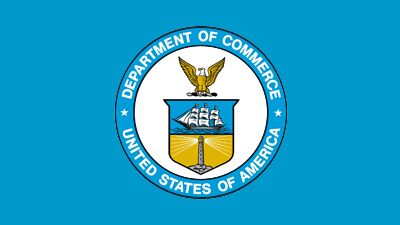
Remarks by U.S. Secretary of Commerce Gina Raimondo: Investing in Leading-Edge Technology: An Update on CHIPS Act Implementation
Feb 26, 2024
Remarks by U.S. Secretary of Commerce Gina Raimondo: Investing in Leading-Edge Technology: An Update on CHIPS Act Implementation
KCPullen@doc.gov
Mon, 02/26/2024 – 15:17
Artificial Intelligence
Manufacturing
AS PREPARED FOR DELIVERY
Monday, February 26, 2024
Office of Public Affairs
publicaffairs@doc.gov
Gina M. Raimondo
Thank you to the Center for Strategic and International Studies for hosting us.
Last February, the Commerce Department rolled out the funding applications for the CHIPS for America program. I said at the time that our effort mirrors the space race – and I meant it.
President Kennedy’s historic call to put a man on the Moon spurred an unprecedented effort by the government, private sector, and academia to secure America’s place at the frontier of innovation.
Now six decades later, President Biden is calling us to unite around a common purpose so that we can once again cement our role as the global technological leader in this industry.
We all know our modern world is powered by semiconductors. From windshield wipers to cell phones to pacemakers to rocket ships, chips are fundamental to every aspect of our lives and our economy. And now, on top of all of this, AI has emerged as a game changer, driving unbelievable demand for leading-edge chips.
The term “Generative AI” wasn’t even part of our vocabulary when Congress was debating the CHIPS and Science Act. Now, it’s everywhere. It takes tens of thousands of leading-edge chips to train one frontier AI model.
U.S. companies lead the world in driving AI forward, dominating the design of AI chips and the development of Large Language Models. But we don’t manufacture or package any of the leading-edge AI chips needed to fuel the innovation ecosystem and power our most critical defense systems.
We cannot build the next generation of technological leadership on such a shaky foundation. We need more talent development, R&D, and manufacturing to take place in America.
Meanwhile, other countries like China aren’t shy about their ambitions and are taking an increasingly aggressive approach to their chip production.
If we want to continue to lead in AI and other central technologies, then we must successfully implement this CHIPS initiative and make sure we are being bold enough with our vision.
When we rolled out the program a year ago, I said we would be judged on two things. First, whether we’re able to build a reliable and resilient semiconductor industry that advances America’s technological leadership; and second, whether we are good stewards of taxpayer dollars. A year into it, I want to report that we are on track to accomplish both.
In record time, the Commerce Department has stood up a program that is flexible, fast, and world-class.
We’ve built a remarkable team of more than 200 people who represent decades of experience across government, academia, and industry with investment backgrounds, technical and policy expertise, and a track record of delivering on big projects.
The early results are incredible. Since President Biden signed the CHIPS Act – and before we announced a single penny in funding – private companies announced almost $200 billion in semiconductor manufacturing investments. I want to thank industry for the way it’s responded with a willingness to partner with us to achieve our national security goals.
At least nine states have created new economic development programs targeted to the semiconductor industry to provide matching funding and further leverage the law.
And more than 50 community colleges across 19 states have announced new or expanded programming to support semiconductor industry opportunities. We are partnering with labor leaders and manufacturers on training workers to build the pipelines we need to operate new semiconductor fabs and meet our workforce goals. That means sitting down with teacher unions around the country to ensure that high school students have access to good-paying jobs with strong career pathways.
At the same time, we worked with academia, labor, government research agencies, entrepreneurs, and industry to stand-up the National Semiconductor Technology Center, which will tackle the R&D challenges facing America’s chips manufacturing ecosystem and scale up the robust, skilled workforce needed to power it. And a week ago announced Deirdre Hanford, a recognized industry veteran, as the CEO of that effort.
That’s the good news.
The bad news is that we’ve received over 600 statements of interest and the reality is that a significant majority of those who are expressing interest are not going to receive funding – including many strong proposals by excellent companies. I’ve also said many times that the point of this program was never to provide the semiconductor industry with every dollar it requests; it is to make targeted investments for our national security objectives.
At the outset, we said that we expected to invest about $28 billion of the program’s $39 billion in incentives for leading-edge chip manufacturing. But leading-edge companies alone have requested more than $70 billion, meaning we’re having many tough conversations.
We are engaging industry in a spirit of collaboration, but we are relentlessly focused on safeguarding taxpayer dollars. Our tough negotiations with individual companies will result in each of them doing more for economic and national security at a lower cost to the taxpayer. This means they’re delivering thousands of high-paying jobs for the communities where they are situated and enhancing our national security through their work and their adherence to the national security restrictions associated with CHIPS grants.
And because we’ve pushed companies to do more for less, we’re going to be able to fund dozens more projects to meet our national and economic security needs.
My conversation with every CEO goes roughly as follows: They come in asking for billions of dollars. I look at them across the table and say, ‘you’ll be lucky if you get half of that.’ And when they come in the next time and learn they’re getting less than half of that, they all tell me ‘Secretary, I’m not feeling so lucky.’
The reality is that we have a finite amount of funding to roll out and urgent national security goals to achieve. So, we have to make every dollar count.
We have decided to prioritize projects that will be operational by 2030. There are worthy proposals with plans to come online after 2030 that we say no to in order to maximize our impact in this decade.
None of this work is easy. Many point out that the investments are risky. I agree – of course there’s risk. But there is greater risk if we continue down the course we were on before the President had the courage to fight for these investments as part of his Investing in America agenda. We cannot overly rely on one part of the world for the single most important piece of hardware in the 21st century. That’s far more dangerous.
Last year, I said the goal was for the U.S. to have at least two new large-scale clusters of leading-edge logic fabs, built by high-skilled labor, with each cluster employing thousands of workers in well-paying jobs.
Now, I’m pleased to say that we expect our investments to exceed that target. We anticipate that our investments in leading-edge logic chip manufacturing will put us on track to produce roughly 20% of the world’s leading-edge logic chips by 2030, up from the zero percent we produce today.
I want to emphasize this point. We anticipate that America will produce 20% of the world’s leading-edge logic chips by the end of the decade, meaning our manufacturing capacity and supply chains will no longer be as vulnerable to geopolitical challenges as they are today.
In addition to leading-edge logic, leading-edge memory is a critical input for AI systems. Our objective is to onshore cost-competitive leading-edge memory at scale here in the U.S.
In fact, I believe the U.S. can be home to the entire silicon supply chain for the production of leading-edge chips – from polysilicon production to wafer manufacturing to fabrication to advanced packaging.
We also cannot lose sight of the importance of current generation and mature node chips, which are essential to cars, defense systems, medical devices, and critical infrastructure. The pandemic laid bare the fragility of these supply chains. To date, we’ve announced three investments in current and mature chip companies – BAE, Microchip, and Global Foundries. We expect to continue to announce additional investments in current mature production to provide a reliable, domestic source of these critical chips.
I’ll close with this: If CHIPS for America is successful – as I believe it will be – by the end of the decade, the United States will be the only country in the world where new chip architectures can be invented in our new research labs, designed for every end-use application, manufactured at scale by well-paid American workers, and packaged with the most advanced technologies on our shores.
We have already caught the attention of the world, and the excitement for this program has been palpable. CEOs, governors, unions, and colleges are all stepping up to ask how they can be part of our efforts to revitalize America’s chip ecosystem. Just five or ten years ago, the conversation was “where in Asia do we expand.” Now, companies are saying they want to build and manufacture right here in America.
We’re making tremendous progress in implementing President Biden’s vision of a strong and vibrant American manufacturing sector, and I’m more optimistic than ever. We are moving fast, but much more importantly, we are focused on getting it right and relentlessly pursuing our national security goals. Together, we are rebuilding our industrial base, supercharging American innovation, creating hundreds of thousands of good-paying jobs, and meeting the monumental challenges of our time.
I’m honored to be doing this work and excited for the announcements in the weeks and months ahead.
Thank you.
Leadership
Gina M. Raimondo
Tags
Secretary Gina Raimondo
National Security
CHIPS and Science Act
CHIPS for America
Read the full report from the U.S. Department of Commerce: Read More


